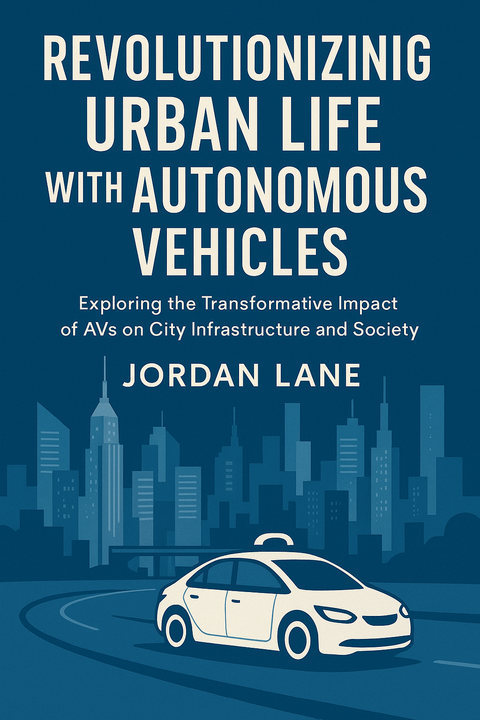
Revolutionizing Urban Life with Autonomous Vehicles
Exploring the Transformative Impact of AVs on City Infrastructure and Society
Included:
✓ 200+ Page AI-Generated Book
✓ ePub eBook File — read on Kindle & Apple Books
✓ PDF Print File (Easy Printing)
✓ Word DOCX File (Easy Editing)
✓ Hi-Res Print-Ready Book Cover (No Logo Watermark)
✓ Full Commercial Use Rights — keep 100% of royalties
✓ Publish under your own Author Name
✓ Sell on Amazon KDP, IngramSpark, Lulu, Blurb & Gumroad to millions of readers worldwide
Introduction to the Future of Urban Mobility
As cities move towards a more modern and efficient future, autonomous vehicles (AVs) are at the forefront of this transformation. This book delves into how AVs are reshaping our urban landscapes and day-to-day life, making it essential reading for city planners, policymakers, and anyone interested in the future of transportation.
The Shift in Urban Infrastructure
Urban infrastructure stands on the brink of a monumental change. With AVs entering the scene, we examine how these vehicles will lessen the need for private ownership and introduce innovative land use strategies. Imagine transforming parking lots into parks and wider sidewalks, promoting greener urban areas where community initiatives can thrive. Through comprehensive research, we reveal the design possibilities for cities that fully embrace AV technology.
Transportation Systems of Tomorrow
AVs promise to revolutionize how we think about transportation. In this section, we explore the implications of moving away from personal car ownership to shared autonomous fleets. With insights into how this trend can enhance public transport systems, especially for underserved populations, readers will gain an understanding of a transportation future that prioritizes efficiency and accessibility.
Social Dynamics and Mobility Inclusion
The advent of AVs heralds a new era of mobility, characterized by equitable access and on-demand services. This book addresses how AVs can bridge the gap for those previously left behind in the public transport landscape. By integrating services into Mobility as a Service platforms, we highlight the potential of AVs to foster social inclusion and affordable transport options.
Challenges and Ethical Considerations
While the benefits of AVs are profound, they come with technological, regulatory, and ethical challenges. The book tackles these complexities head-on, discussing the necessary frameworks required to ensure safety, fairness, and privacy in the ready adoption of autonomous vehicles.
Conclusion: A Human-Centric Future
In conclusion, the future city shaped by autonomous vehicles could be a place that values pedestrian-friendly design, environmental sustainability, and enhanced quality of life. Are we ready to embrace this change? Discover the answers within these pages and be part of the conversation on urban transformation.
Table of Contents
1. The Future of Urban Mobility- Understanding Autonomous Vehicles
- Trends in Urban Mobility
- The Role of Technology in Shaping Cities
2. Rethinking Urban Infrastructure
- Transforming City Landscapes
- Land Use and Space Optimization
- Designing for Green Spaces
3. Revolutionizing Transportation Systems
- Shared Autonomous Fleets
- Public Transport Enhancements
- Accessibility for All
4. Social Dynamics and Mobility Inclusion
- Equitable Access to Transport
- On-Demand Services Explained
- Integrating Mobility as a Service (MaaS)
5. Challenges Ahead
- Technological Barriers
- Regulatory Frameworks Explained
- Ethical Considerations in AV Adoption
6. Safety and Security in AVs
- Understanding AV Safety Features
- Cybersecurity Risks and Solutions
- Public Perceptions of AV Safety
7. Environmental Sustainability
- Lowering Emissions with AVs
- Impact on Urban Air Quality
- Promoting Sustainable Practices
8. Economic Implications
- The Cost of AV Implementation
- Effects on Employment in Transportation
- Valuing New Urban Development
9. Case Studies in Urban Transformation
- Cities Leading the Change
- Lessons from Early Implementations
- Comparative Analysis of Global Strategies
10. The Role of Policy and Regulation
- Governmental Approaches to AVs
- International Regulations Reviewed
- Creating Effective Policies for Adoption
11. The Human-Centric Approach
- Designing for People, Not Cars
- Community Engagement in AV Planning
- Tracking Impact on Quality of Life
12. Envisioning the Future
- What's Next for AV Technology?
- Imagining Future Cities
- Preparing Society for Change
Target Audience
This book is aimed at urban planners, policymakers, transportation specialists, academics, and anyone interested in the future of autonomous vehicles and their implications for urban life.
Key Takeaways
- Understanding the transformative role of AVs in urban planning.
- Recognizing the potential social impacts and inclusivity of AV technology.
- Exploring practical challenges and ethical considerations in the adoption of AVs.
- Identifying best practices in rethinking urban infrastructure for AV integration.
- Gaining insights into future transportation systems and public policy approaches.
